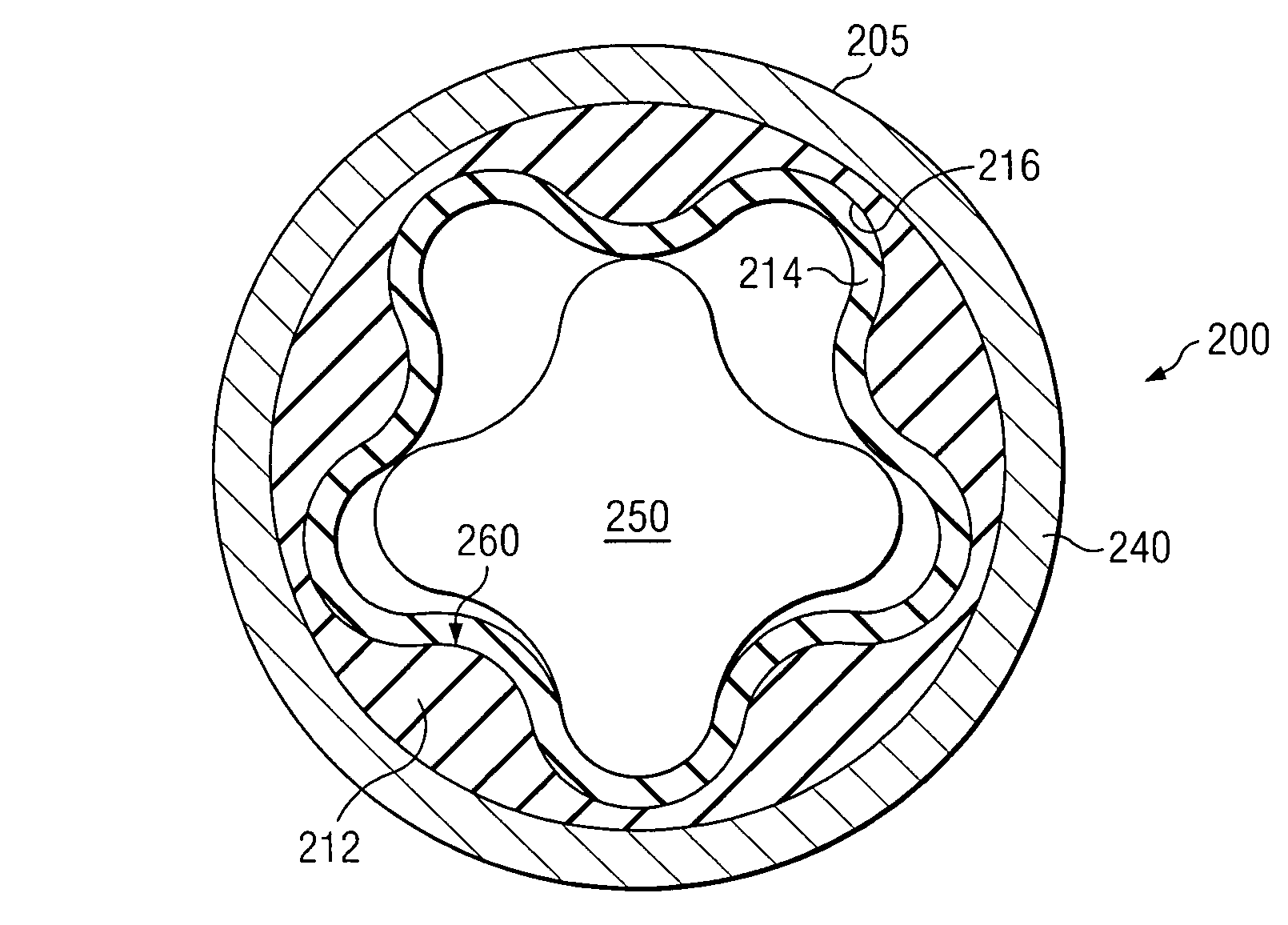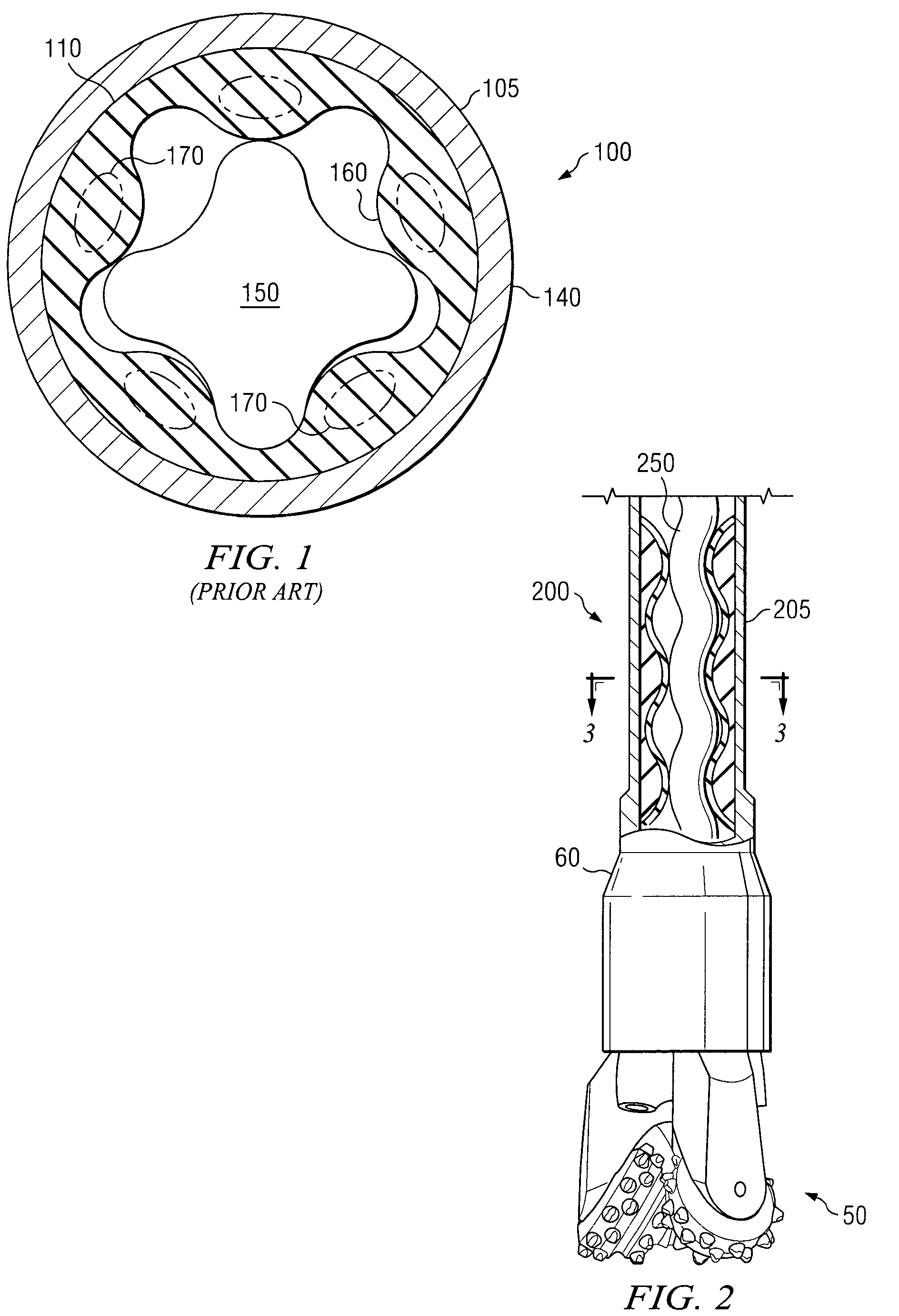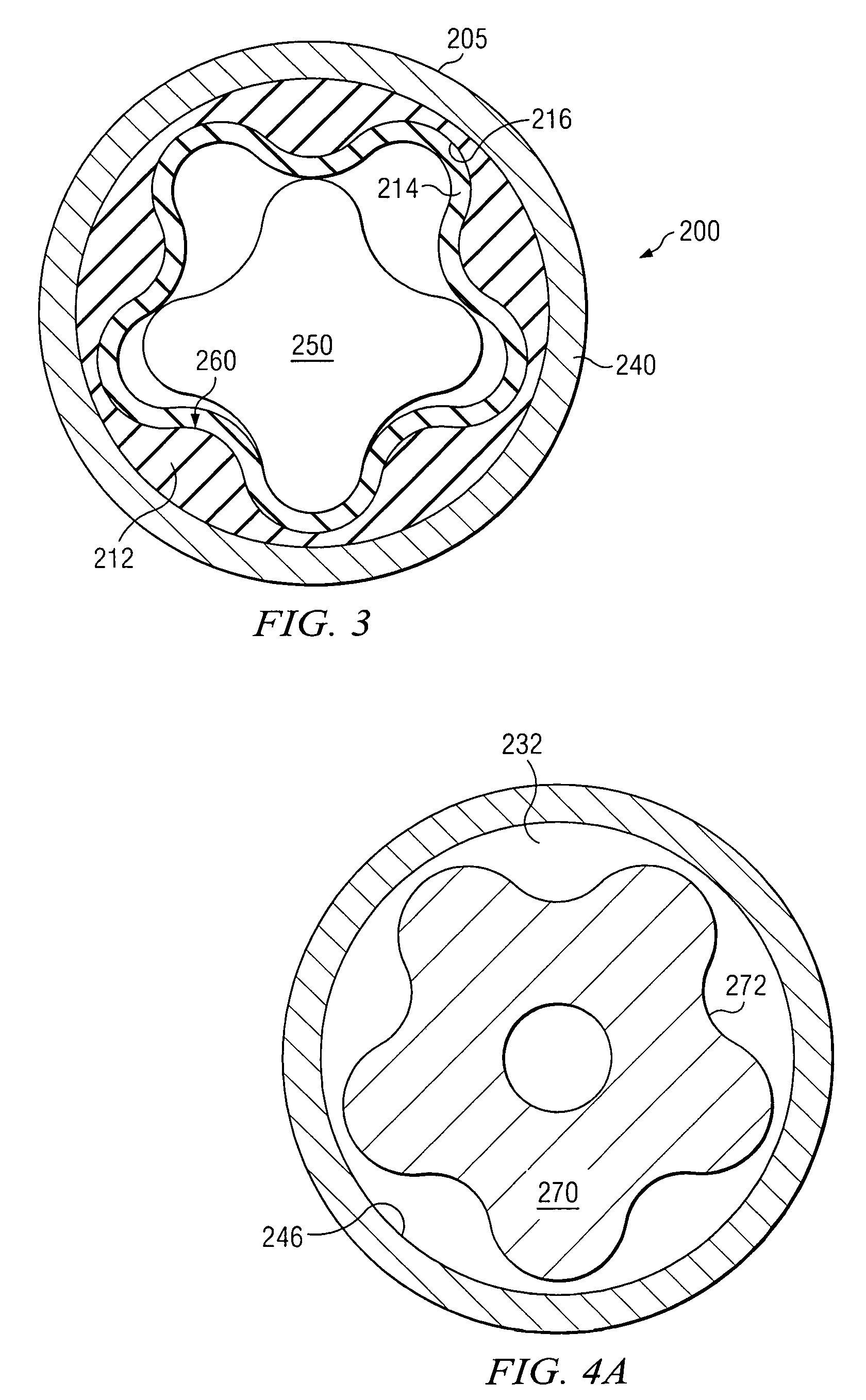Multiple elastomer layer progressing cavity stators
a technology of elastomer layer and stators, which is applied in the direction of machines/engines, rotary/oscillating piston pump components, liquid fuel engines, etc., can solve the problems of cracks, cavities, and other types of failure of the lobe, so as to improve the performance of the stator and reduce the associated tradeoffs , the effect of improving reliability
- Summary
- Abstract
- Description
- Claims
- Application Information
AI Technical Summary
Benefits of technology
Problems solved by technology
Method used
Image
Examples
Embodiment Construction
[0024]FIGS. 1, 3, 5, and 7 each depict circular cross-sections through Moineau style power sections in an exemplary 4 / 5 design. In such a design, the differing helical configurations on the rotor and the stator provide, in circular cross section, 4 lobes on the rotor and 5 lobes on the stator. It will be appreciated that this 4 / 5 design is depicted purely for illustrative purposes only, and that the present invention is in no way limited to any particular choice of helical configurations for the power section design.
[0025]FIG. 1 depicts a conventional Moineau style power section 100 in circular cross-section, in which stator 105 provides a helical cavity portion 110. In the embodiment of FIG. 1, helical cavity portion 110 is of an all-elastomer construction, including a single elastomer layer. Rotor 150 is deployed within stator 105. Stator 105 further comprises outer tube 140. Helical cavity portion 110 is deployed on the inside of outer tube 140, as is well known in the art.
[0026]...
PUM
 Login to View More
Login to View More Abstract
Description
Claims
Application Information
 Login to View More
Login to View More - R&D
- Intellectual Property
- Life Sciences
- Materials
- Tech Scout
- Unparalleled Data Quality
- Higher Quality Content
- 60% Fewer Hallucinations
Browse by: Latest US Patents, China's latest patents, Technical Efficacy Thesaurus, Application Domain, Technology Topic, Popular Technical Reports.
© 2025 PatSnap. All rights reserved.Legal|Privacy policy|Modern Slavery Act Transparency Statement|Sitemap|About US| Contact US: help@patsnap.com



